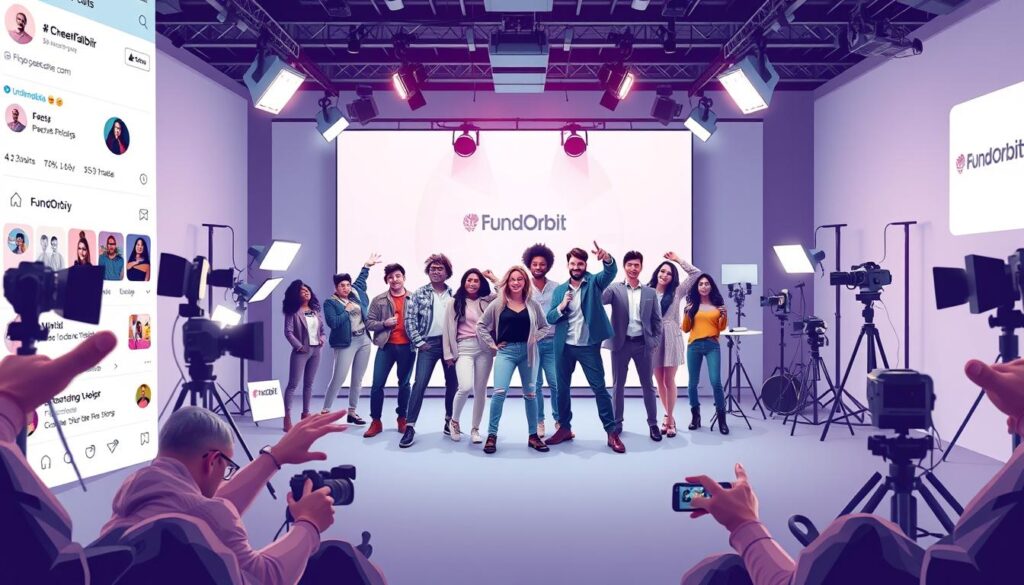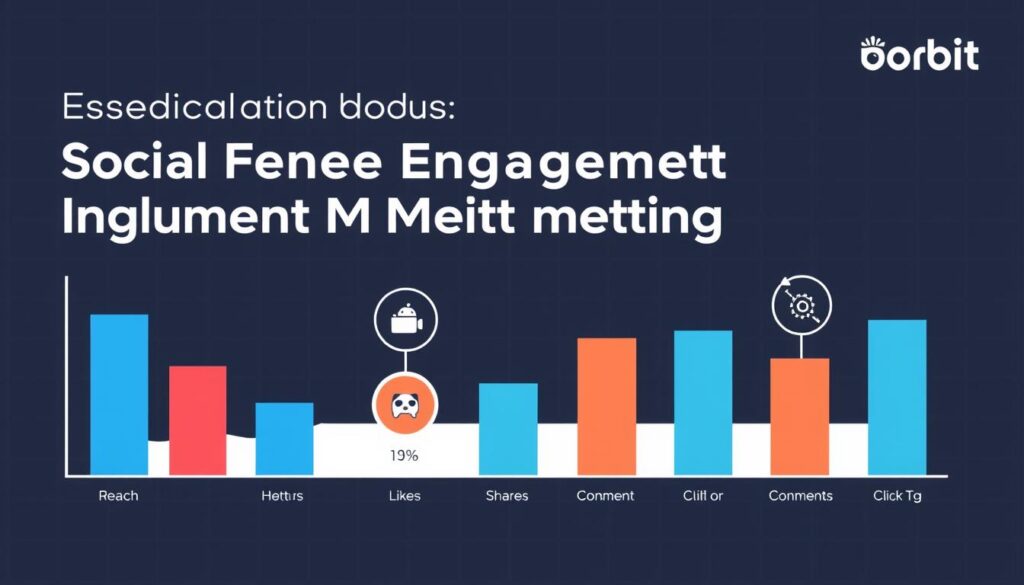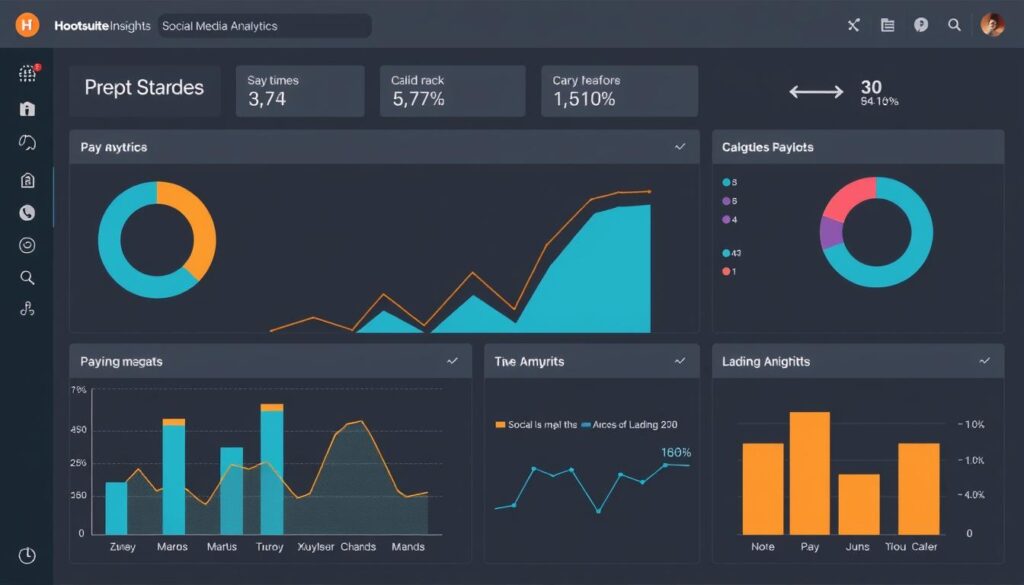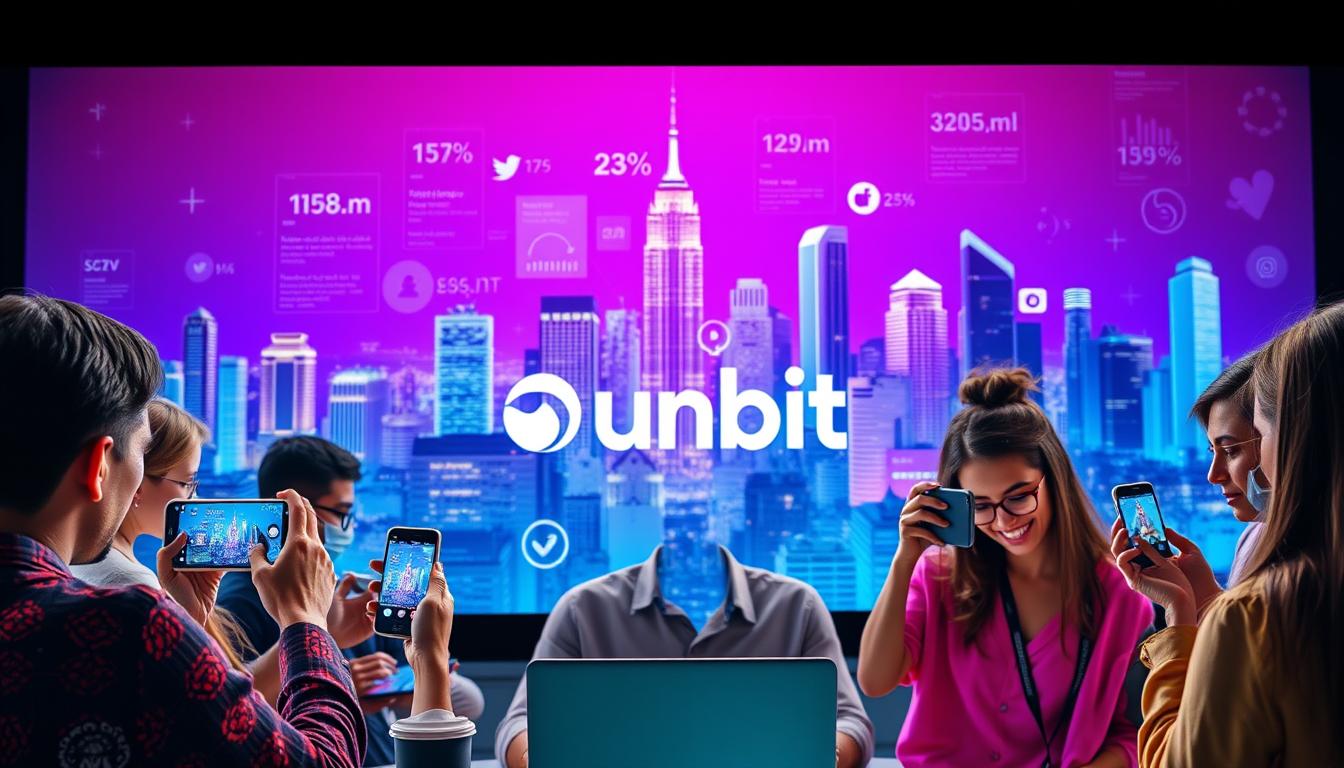In today’s digital landscape, influencer marketing has become a crucial element for brands aiming to expand their reach and boost engagement. A staggering 81% of US-based marketers consider it an essential part of their strategy.
At CoWrit Technologies Inc, we’ve witnessed firsthand how data-driven marketing strategies can transform brand growth. By effectively measuring engagement metrics and collaborating with influencers, businesses can optimize their campaigns for better ROI.
As we explore the intricacies of successful marketing strategies, we’ll delve into the importance of tracking key performance indicators and building effective partnerships with influencers to drive meaningful results.
Key Takeaways
- Understanding the role of influencer marketing in modern marketing strategies
- Measuring engagement metrics to optimize campaign performance
- Building effective partnerships with influencers for better ROI
- The importance of data-driven decision-making in marketing
- Strategies for maximizing the impact of influencer collaborations
The Power of Data-Driven Social Media Campaigns
In today’s digital landscape, data-driven social media campaigns have revolutionized the way brands connect with their audience. By leveraging data insights, marketers can now craft social media campaigns that are not only engaging but also measurable in their impact.
Why Measuring Social Media Performance Matters
Measuring social media performance is crucial for understanding the effectiveness of marketing strategies. It allows brands to identify areas of improvement and optimize their campaigns for better ROI. According to industry reports, the average ROI for influencer marketing is $5.78 for every $1 spent, highlighting the potential of well-executed campaigns.
The importance of measurement lies in its ability to guide marketing decisions with data-backed insights. This approach enables brands to refine their strategy, ensuring that their efforts resonate with the target audience.
The Rise of Influencer Marketing in Modern Strategies
Influencer marketing has evolved significantly, becoming a core element of modern marketing strategies. It’s no longer just about achieving a viral moment; it’s about building lasting connections between brands and their audience through influencers.
“The rise of influencer marketing reflects changing consumer preferences, with audiences increasingly trusting recommendations from relatable individuals over traditional advertising messages.”
| Evolution Stage | Characteristics | Impact on Marketing |
|---|---|---|
| Niche Tactic | Limited brand involvement | Minimal impact |
| Central Component | Strategic partnerships | Significant ROI |
| Diversified Influencer Landscape | Inclusion of micro and nano influencers | Higher engagement rates |
By integrating influencer marketing into their broader digital strategies, brands can create powerful synergies that amplify campaign effectiveness and drive measurable business outcomes.
Setting Strategic Goals for Your Social Media Campaigns
Before launching a social media campaign, it’s essential to establish clear strategic objectives. We need to define what we want to achieve through our social media marketing strategy, whether it’s increasing brand awareness, driving website traffic, or boosting sales. By setting specific, measurable goals, we can create a roadmap for our campaign and ensure everyone involved is working towards the same outcomes.
Aligning Campaign Objectives with Business Goals
Aligning our social media campaign objectives with our overall business goals is crucial for maximizing ROI. We should consider how our influencer marketing efforts contribute to broader business objectives, such as revenue growth or customer acquisition. For instance, if our primary business goal is to increase sales, we should focus on influencer marketing campaigns that drive conversions and track the ROI of these efforts.
To measure influencer marketing performance realistically, we compare our KPIs to industry benchmarks. This helps us gauge whether our campaign is underperforming, meeting expectations, or exceeding goals. For example, the average ROI for influencer marketing campaigns is 5.78x, meaning brands earn $5.78 for every dollar spent.
Establishing Benchmarks for Success
Establishing clear benchmarks is vital for evaluating the success of our social media campaigns. We consider multiple factors, including platform-specific standards, industry averages, and brand-specific historical performance. By developing comprehensive benchmark frameworks that include both quantitative metrics (like engagement rates and conversion percentages) and qualitative factors (such as sentiment and brand perception), we can get a complete picture of our campaign’s performance.
| Benchmark Type | Description | Example Metrics |
|---|---|---|
| Industry Benchmarks | Compare performance to industry averages | Average engagement rate, ROI |
| Historical Performance | Track improvement over time | Previous campaign engagement rates, conversion rates |
| Platform-Specific Standards | Understand platform-specific metrics | Instagram engagement rates, Twitter conversion rates |

By regularly reviewing and refining our benchmarks, we ensure they remain relevant as platforms evolve, audience behaviors change, and brand objectives shift over time. This allows us to make data-driven adjustments to our campaigns and optimize our influencer marketing strategies for better results.
Social Media Campaigns: Engagement Metrics, Influencer Collaborations
In the realm of social media campaigns, understanding the synergy between engagement metrics and influencer collaborations is crucial. As we navigate the complexities of modern marketing, it becomes increasingly clear that engagement is the lifeblood of successful influencer campaigns, serving as both a driver and indicator of meaningful audience connections.
To grasp the full potential of social media campaigns, it’s essential to understand how engagement metrics influence the outcome of influencer collaborations. Engagement rate, calculated by multiplying 100 by the sum of likes, shares, and comments, then dividing by the influencer’s follower count, is a vital metric. Utilizing social media analytics platforms can streamline this process, automatically tracking engagement rates and providing valuable insights.
Understanding the Relationship Between Metrics and Collaborations
Our research indicates that most social marketers consider social media engagement data a vital influencer marketing metric to secure internal buy-in for influencer marketing. High engagement rates signal that content is resonating with audiences, creating the attention and interest necessary for influencer messages to drive desired actions.
“The key to a successful influencer campaign lies in its ability to engage the audience meaningfully.”
Engagement extends beyond simple likes to include meaningful interactions like comments, shares, and saves—each representing different levels of audience investment and intent. By understanding these nuances, brands can optimize their influencer partnerships to generate stronger results across all campaign metrics.

How Engagement Drives Influencer Campaign Success
The most effective influencer campaigns prioritize engagement quality over quantity, focusing on generating meaningful interactions rather than superficial metrics. Engagement serves as a powerful amplification mechanism, with each interaction extending content reach through algorithmic promotion and organic sharing among connected audiences.
- We’ve observed that high engagement rates are indicative of content that resonates with audiences.
- By optimizing for engagement, brands can maximize the impact of their influencer partnerships.
- Different types of engagement contribute to campaign objectives, from awareness-building shares to conversion-indicating comments and clicks.
By focusing on engagement and understanding its role in influencer collaborations, brands can create more effective social media campaigns that drive meaningful results.
Essential Engagement Metrics to Track
Effective social media campaign measurement is rooted in understanding and tracking the right engagement metrics. To gauge the success of your campaigns, you need to delve into both top-of-funnel and bottom-of-funnel metrics.
Top-of-Funnel Metrics: Reach, Impressions, and Awareness
Top-of-funnel metrics provide insights into how well your campaign is reaching and engaging your target audience. Reach and impressions are crucial indicators of your campaign’s visibility. Reach refers to the number of unique users who have viewed your content, while impressions represent the total number of times your content has been displayed. These metrics help you understand the awareness generated by your campaign.
To further analyze awareness, consider metrics such as:
- Engagement rate: likes, comments, shares, etc.
- Audience growth rate: the rate at which your follower base is expanding
- Content virality: how often your content is shared or goes viral

Bottom-of-Funnel Metrics: Conversions, Sales, and ROI
While top-of-funnel metrics are important, bottom-of-funnel metrics provide a direct connection between your social media campaigns and business results. Conversions, sales, and return on investment (ROI) are key indicators of your campaign’s impact on your bottom line.
To accurately measure the ROI of influencer marketing and its impact on your overall social media ROI, you need to calculate the revenue generated by influencer campaigns. Tools like Google Analytics, promotional codes, and direct sales tracking on social media can help determine this revenue. By tracking revenue, you can identify which influencers offer the best ROI and adjust your strategy accordingly.
Key bottom-of-funnel metrics include:
- Conversion metrics: tracking how effectively your campaigns drive specific actions
- Sales attribution metrics: connecting influencer content directly to revenue generation
- ROI calculations: evaluating the overall financial efficiency of your campaigns
By understanding the relationship between engagement metrics and conversion outcomes, you can optimize your content and calls-to-action to improve bottom-of-funnel performance. This, in turn, helps secure continued investment in social media campaigns and influencer collaborations.
Building Effective Influencer Collaborations

The key to successful influencer marketing lies in identifying the right partners and fostering authentic collaborations. We prioritize building meaningful relationships with influencers who align with our brand values and target audience.
Identifying the Right Influencers for Your Brand
To find the ideal influencers, we analyze their content, engagement rates, and audience demographics. According to Later’s Social Media Marketing Report, brands that set clear benchmarks are 45% more likely to achieve their campaign objectives. This involves understanding industry standards and platform-specific metrics to establish meaningful targets for influencer campaigns.
We look for influencers who have a genuine interest in our brand and can create engaging content that resonates with their audience. This approach ensures that our collaborations feel natural and authentic, rather than forced or artificial.
Creating Authentic Partnership Opportunities
We believe in creating partnership opportunities that benefit both our brand and the influencer. This includes collaborative content development, where influencers can integrate our brand messages into their established content style. By doing so, we maintain the authentic voice that attracted their audience in the first place.
- We prioritize authenticity in influencer partnerships, recognizing that audiences can easily detect forced or inauthentic collaborations.
- Long-term partnerships often deliver greater value than one-off campaigns, allowing influencers to develop genuine familiarity with our products and services.
- We help brands develop flexible creative briefs that provide clear guidance while giving influencers the freedom to create content that resonates with their audience.
By establishing clear expectations and communication channels from the outset, we can build more productive relationships that deliver consistent results across multiple campaigns.
Tracking and Analyzing Campaign Performance
The success of social media campaigns hinges on the ability to track and analyze their performance effectively. By doing so, we can gain valuable insights into what works and what doesn’t, allowing for data-driven decisions to optimize future campaigns.
Tools and Technologies for Measurement
To effectively track campaign performance, we utilize a variety of social media analytics tools. Some of the best tools available include Hootsuite Insights, Sprout Social, and Google Analytics. These tools provide comprehensive data on engagement metrics, reach, impressions, and more.

By leveraging these tools, we can collect and analyze data from various social media platforms, gaining a holistic view of our campaign’s performance.
Interpreting Data for Actionable Insights
Collecting data is just the first step; the real value lies in interpreting it to gain actionable insights. We analyze metrics such as engagement rate, sentiment analysis, and conversion rates to understand the story behind the data.
- We believe that data collection is only the beginning—the real value comes from transforming raw metrics into actionable insights that drive campaign optimization and strategic decision-making.
- Pattern recognition across multiple campaigns helps identify the characteristics of high-performing content and partnerships, creating a template for future success.
- Comparative analysis between different influencers, content formats, and platforms reveals which combinations deliver the strongest results for specific campaign objectives.
- We help brands move beyond isolated metrics to understand the relationships between different data points, such as how engagement patterns correlate with conversion rates or how reach impacts overall campaign efficiency.
- Contextual interpretation is crucial, considering factors like seasonal trends, competitive activities, and platform algorithm changes that might impact performance metrics.
- The most valuable insights often come from unexpected data points or anomalies that challenge assumptions and reveal new opportunities for campaign innovation.
- Regular reporting cadences with standardized formats make it easier to identify trends over time while ensuring that insights are communicated effectively to all stakeholders.
By interpreting data in context and deriving actionable insights, we can continuously improve campaign performance and drive strategic decisions.
Optimizing Campaigns Based on Performance Data
Performance data analysis is key to unlocking the full potential of social media campaigns and achieving long-term success. By examining the data collected during a campaign, we can identify areas of strength and weakness, and make informed decisions to optimize future efforts.
Making Data-Driven Adjustments Mid-Campaign
To maximize the effectiveness of our social media campaigns, we need to be able to make data-driven adjustments mid-campaign. This involves continuously monitoring key performance indicators (KPIs) such as engagement rates, conversions, and return on investment (ROI). By doing so, we can identify areas that require improvement and make timely adjustments to optimize campaign performance.
Focusing on ROI-driven KPIs is crucial for long-term success. Metrics such as Cost per acquisition (CPA), Customer acquisition cost (CAC), Return on ad spend (ROAS), and Return on investment (ROI) provide valuable insights into the financial outcomes of our influencer marketing efforts.
| Metric | Description | Importance |
|---|---|---|
| CPA | Cost per acquisition | Helps evaluate the cost-effectiveness of campaigns |
| CAC | Customer acquisition cost | Provides insight into the total cost of acquiring a customer |
| ROAS | Return on ad spend | Measures the revenue generated by ad spend |
| ROI | Return on investment | Evaluates the overall return on investment for campaigns |
Applying Insights to Future Collaborations
The insights gained from analyzing campaign performance data can be applied to future collaborations, enabling us to refine our influencer marketing strategy. By understanding which influencer characteristics, content approaches, and campaign structures deliver strong results, we can optimize our future campaigns for success.
We emphasize the importance of systematic knowledge management, creating processes that capture campaign learnings and make them accessible for future planning and strategy development. By doing so, we can ensure that our campaigns are continually improving and delivering strong ROI.

Conclusion: Maximizing Social Media ROI Through Measurement and Collaboration
In the realm of social media marketing, the integration of rigorous measurement practices and strategic influencer collaborations is paramount. We’ve explored how this powerful approach delivers measurable business results through enhanced influencer marketing strategies.
By establishing clear metrics aligned with business objectives, brands can develop focused influencer partnerships that drive specific outcomes. At CoWrit Technologies Inc, we help brands implement comprehensive measurement frameworks and develop strategic collaborations that drive meaningful engagement and business growth.
| Key Strategies | Description | Benefits |
|---|---|---|
| Rigorous Measurement Practices | Tracking KPIs aligned with campaign goals | Measurable outcomes and enhanced ROI |
| Strategic Influencer Collaborations | Partnering with influencers who align with brand values | Increased brand awareness and engagement |
| Data-Driven Optimization | Continuous testing and refinement based on performance data | Improved campaign performance and ROI |
To maximize your social media ROI, connect with us via WhatsApp at +44-7822010953 to discuss how our expertise can help.

About CoWrit Technologies Inc
With a focus on data-driven marketing, we help brands navigate the ever-changing digital landscape and achieve tangible business outcomes.
Our comprehensive service offerings include AI Generative Applications, Content Writing, Website Design and Development, Graphics Design, Digital Marketing, eBooks Writing, and Ad Campaign Management.
We pride ourselves on building long-term partnerships with our clients. To learn more about leveraging social media for affiliate marketing, visit our guide.
Connect with us via WhatsApp at +44-7822010953 to discuss your brand’s needs.


